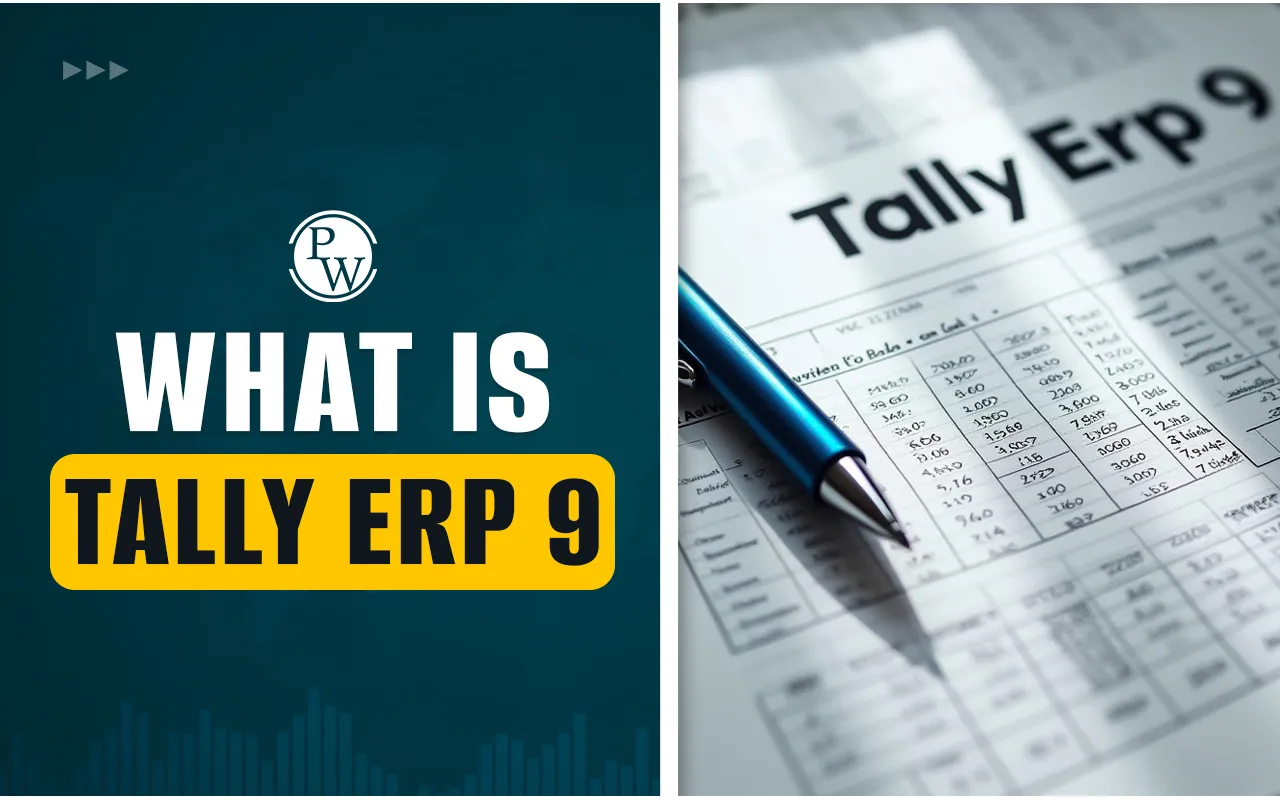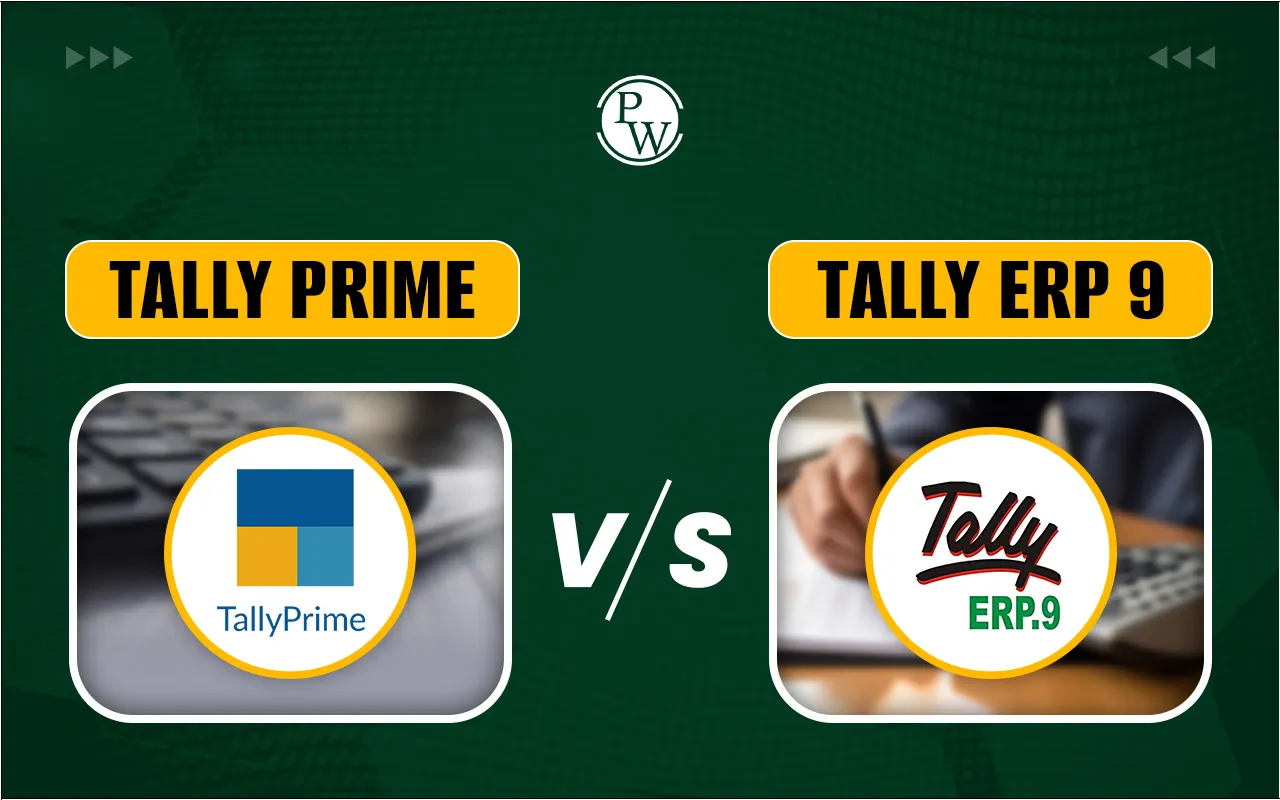
Tally Interview Questions: Are you ready to ace your Tally job interview? Tally is a widely used accounting software that helps businesses manage financial transactions, inventory, payroll, and reporting. If you are preparing for a Tally job interview, knowing the right Tally interview questions with answers can boost your confidence.
Interviewers often ask Tally-related interview questions covering both basic concepts and practical applications. Being familiar with the Tally questions asked in interviews can help you respond effectively. This guide provides Tally interview questions for freshers along with sample answers to enhance your preparation.
Let’s explore the most commonly asked Tally interview questions and answers for interviews, along with tips to help you succeed.
What is Tally?
Tally is accounting software used by businesses to manage financial transactions, inventory, payroll, and taxation. It simplifies bookkeeping by recording entries similar to a manual ledger. Many Tally interview questions focus on its key features, such as GST compliance, bank reconciliation, and financial reporting.
Tally basics often form the foundation of interview questions for freshers. Employers test understanding of ledgers, groups, vouchers, GST setup, and trial balance features. Covering these basic Tally concepts helps you answer beginner-level Tally interview questions confidently.
For example, a small business can use Tally to track sales, generate invoices, and calculate taxes automatically. The latest version, TallyPrime, offers an improved interface and enhanced functionality. Understanding these features can help in answering Tally interview questions confidently and showcasing practical knowledge during interviews.
Top 25+ Tally Interview Questions with Answers
If you’re preparing for a Tally job interview, understanding common Tally interview questions can help you perform well. Here are some of the frequently asked Tally interview questions with answers, including Tally-related interview questions for freshers and experienced professionals.
Question 1: What are the features of Tally ERP 9?
Answer: Tally ERP 9 is a popular accounting software used for managing financial transactions. Some of its key features include:
- Accounting Management: Handles vouchers, ledgers, and financial statements.
-
Inventory Management: Tracks stock levels, orders, and warehouse management.
-
Taxation: Supports GST, VAT, TDS, and other tax calculations.
-
Payroll Management: Manages employee salaries, bonuses, and deductions.
-
Banking Features: Provides cheque printing, reconciliation, and online banking support.
-
Multi-Currency Support: Helps businesses dealing with foreign transactions.
Question 2: What is a ledger in Tally?
Answer: A ledger in Tally is an account that records financial transactions related to a particular entity, such as customers, suppliers, or expenses.
For example:
-
Sales Ledger – Records sales transactions.
-
Purchase Ledger – Records purchase transactions.
-
Cash Ledger – Maintains all cash-related transactions.
Ledgers are categorized under different groups like assets, liabilities, income, and expenses.
Question 3: How do you create a ledger in Tally?
Answer: To create a ledger in Tally, follow these steps:
Step 1: Open Tally and go to Gateway of Tally → Accounts Info.
Step 2: Select Ledgers → Create.
Step 3: Enter the ledger name (e.g., "Rent Expense").
Step 4: Select the appropriate Group (e.g., "Indirect Expenses").
Step 5: Provide additional details like GST details if applicable.
Step 6: Press Ctrl + A to save.
Question 4: What is the difference between a ledger and a group in Tally?
Answer: In Tally, Ledgers and Groups help organize financial data efficiently. A Ledger records individual transactions, while a Group categorizes multiple ledgers for better reporting. Here’s a comparison:
|
Tally Interview Questions: Tally Ledger vs. Group Tally |
||
|
Basis |
Ledger |
Group |
|
Definition |
An individual account that records transactions. |
A collection of related ledgers. |
|
Purpose |
Tracks financial transactions. |
Organizes ledgers for reporting. |
|
Example |
Cash Account, Rent Expense |
Assets, Liabilities, Indirect Expenses |
Question 5: What are the types of vouchers in Tally?
Answer: Tally uses vouchers to record different financial transactions. The main types of vouchers are:
- Payment Voucher: Records cash and bank payments.
-
Receipt Voucher: Records cash and bank receipts.
-
Contra Voucher: Used for fund transfers within the organization (e.g., cash deposit in the bank).
-
Journal Voucher: Records non-cash transactions like adjustments.
-
Purchase Voucher: Used to record purchases.
-
Sales Voucher: Used for recording sales transactions.
Question 6: What is the difference between single-entry and double-entry accounting in Tally?
Answer: In Tally, Single-Entry and Double-Entry accounting systems define how transactions are recorded. While Single-Entry records only one side of a transaction, Double-Entry ensures accuracy by recording both debit and credit. Here’s a comparison:
|
Tally Interview Questions: Tally Single-Entry vs. Tally Double-Entry |
||
|
Basis |
Single Entry |
Double Entry |
|
Entries |
Only one aspect (either debit or credit) is recorded. |
Both debit and credit aspects are recorded. |
|
Accuracy |
Less accurate, used for small businesses. |
More accurate and widely used. |
|
Example |
Recording only cash inflow or outflow. |
Recording both cash received and corresponding income. |
Tally follows the double-entry system, ensuring every transaction affects two accounts.
Question 7: How does Tally handle GST calculations?
Answer: Tally automates GST calculations by applying tax rates based on predefined settings. Steps to configure GST in Tally:
- Enable GST: Go to Features (F11) → Statutory & Taxation → Enable GST.
-
Set Tax Rates: Define CGST, SGST, IGST rates under GST Details.
-
Create GST Ledgers: Set up ledgers for GST input and output tax.
-
Apply GST in Vouchers: Select GST when making sales or purchase entries.
-
Generate GST Reports: View reports in Gateway of Tally → Display → Statutory Reports → GST Reports.
Question 8: What is a trial balance in Tally?
Answer: A trial balance is a report that lists all ledger balances to check whether total debits equal total credits. It helps in detecting errors in accounting records.
To view the trial balance in Tally:
Go to Gateway of Tally → Display → Trial Balance.
Question 9: What is TDS in Tally? How do you configure it?
Answer: TDS (Tax Deducted at Source) is a tax collected by the government at the time of payments like rent, salary, and professional fees.
To configure TDS in Tally:
- Enable TDS from F11 → Statutory & Taxation.
-
Define TDS Rates based on income type.
-
Create TDS Ledgers under Duties & Taxes.
-
Apply TDS in transactions while making payments.
Question 10: What are cost centers and cost categories in Tally?
Answer: In Tally, Cost Centers and Cost Categories help businesses track expenses efficiently. Here’s how they work:
- Cost Centers: Used to track expenses for different departments or projects.
-
Cost Categories: Helps in analyzing costs by multiple parameters (e.g., location, department).
Example: A company has Marketing and Production as cost centers. Expenses can be allocated to these centers to track departmental spending separately.
To enable cost centers:
Gateway of Tally → F11 → Enable Cost Centers & Categories.
Question 11: How do you generate financial statements in Tally?
Answer: Tally provides financial reports like:
- Profit & Loss Statement: Shows business income and expenses.
-
Balance Sheet: Displays assets, liabilities, and capital.
-
Cash Flow Statement: Tracks cash inflow and outflow.
To generate reports:
Gateway of Tally → Display → Financial Statements.
Question 12: How do you reconcile bank statements in Tally?
Answer: Bank reconciliation in Tally helps match company records with bank statements. Steps:
Step 1: Go to Gateway of Tally → Banking → Bank Reconciliation.
Step 2: Select the Bank Account.
Step 3: Enter the Bank Statement Details.
Step 4: Match transactions and save.
This helps identify errors like missed entries or duplicate payments.
Question 13: What is the use of a stock summary in Tally?
Answer: A stock summary report shows real-time inventory status, including stock availability, value, and movement.
To access it:
Gateway of Tally → Display → Inventory Reports → Stock Summary.
Question 14: How can you back up and restore data in Tally?
Answer: Tally allows users to create backups to prevent data loss.
To Back Up Data:
-
Gateway of Tally → F3 (Company Info) → Backup.
-
Select the backup location and save.
To Restore Data:
-
Gateway of Tally → F3 (Company Info) → Restore.
-
Select the backup file and restore.
This ensures data safety in case of system failure.
Question 15: What is the difference between Tally Silver and Tally Gold?
Answer: Tally provides Silver and Gold editions to cater to different business needs. Tally Silver is for single users, while Tally Gold allows multiple users to work simultaneously. Here’s a comparison:
|
Tally Interview Questions: Tally Silver vs. Tally Gold |
||
|
Feature |
Tally Silver |
Tally Gold |
|
Users |
Single-user |
Multi-user |
|
Access |
Can be installed on one system only |
Can be accessed by multiple users within a network |
|
Price |
Less expensive |
More expensive |
|
Suitable for |
Small businesses |
Medium to large businesses |
Question 16: What are the different types of accounting groups in Tally?
Answer: Tally categorizes accounts into different groups for better financial management. The main groups are:
-
Primary Groups: Assets, Liabilities, Income, and Expenses.
-
Sub-Groups: Bank Accounts, Loans, Sundry Debtors, Sundry Creditors, Indirect Expenses, etc.
Each ledger is assigned to a relevant group for organized record-keeping.
Question 17: What is the purpose of a Debit Note and Credit Note in Tally?
Answer: In Tally, Debit Note and Credit Note help in managing purchase returns and sales returns. Here’s how they work:
- Debit Note: Used when a company returns goods to a supplier or claims an expense refund.
-
Credit Note: Issued when a company accepts a return from a customer or grants a refund.
To create:
Gateway of Tally → Accounting Vouchers → Press F9 for Debit Note or Ctrl + F8 for Credit Note.
Question 18: How can you pass a journal entry in Tally?
Answer: A Journal Voucher in Tally is used for recording non-cash transactions such as adjustments, depreciation, or internal transfers. Follow these steps to create one:
Step 1: Go to Gateway of Tally → Accounting Vouchers → Press F7 (Journal).
Step 2: Select the ledger accounts involved.
Step 3: Enter the debit and credit amounts.
Step 4: Add narration and save.
Example:
Depreciation Entry → Debit "Depreciation A/c" and Credit "Machinery A/c".
Question 19: What are the shortcut keys used in Tally?
Answer: Tally provides various shortcut keys to speed up data entry and navigation. Here are some commonly used shortcuts:
|
Tally Interview Questions: Tally Shortcut Keys |
|
|
Shortcut Key |
Function |
|
F1 |
Select Company |
|
F2 |
Change Date |
|
F3 |
Select Company or Change Currency |
|
F4 |
Contra Voucher |
|
F5 |
Payment Voucher |
|
F6 |
Receipt Voucher |
|
F7 |
Journal Voucher |
|
F8 |
Sales Voucher |
|
F9 |
Purchase Voucher |
Question 20: How can you secure data in Tally using passwords?
Answer: Tally offers Security Control features to safeguard financial data. Here’s how you can enable it:
Step 1: Go to Gateway of Tally → F3 (Company Info) → Security Control.
Step 2: Set up a User ID and Password.
Step 3: Define access rights for different users.
Step 4: Enable TallyVault for encrypted data protection.
This ensures only authorized users can access sensitive financial information.
Question 21: What is the difference between a Memorandum Voucher and an Optional Voucher?
Answer: Tally provides different voucher types to manage transactions effectively. Memorandum and Optional Vouchers serve distinct purposes in accounting. Here’s how they differ:
|
Tally Interview Questions: Tally Memorandum Voucher vs. Tally Optional Voucher |
||
|
Feature |
Memorandum Voucher |
Optional Voucher |
|
Purpose |
Records temporary transactions not affecting accounts. |
Used for future planning and review before final posting. |
|
Impact on Ledger |
No impact on books. |
Not included in reports until converted. |
|
Example |
Pending expenses, doubtful debts. |
Provisional sales or purchase entries. |
Question 22: How does Tally handle multiple currencies?
Answer: Tally allows transactions in multiple currencies by:
- Enabling Multi-Currency under F11 Features.
-
Defining different currency exchange rates.
-
Applying currency selection while creating ledgers.
-
Viewing reports with currency conversion.
This is useful for businesses dealing in international transactions.
Question 23: How can you transfer stock between two branches in Tally?
Answer: You can record stock transfers between branches in Tally using a Stock Journal Voucher. Here’s how to do it:
Step 1: Go to Gateway of Tally → Inventory Vouchers → Press F7 (Stock Journal).
Step 2: Select the source location and the destination location.
Step 3: Enter the stock details and quantity.
Step 4: Save the entry.
This helps track internal stock movements between warehouses or branches.
Question 24: What is the Reorder Level in Tally, and how is it set?
Answer: The Reorder Level helps maintain minimum stock levels for smooth operations. To set:
- Go to Inventory Info → Stock Items → Alter → Set Reorder Level.
-
Define minimum and maximum stock quantity.
-
Tally generates reminders when stock reaches the reorder point.
This prevents stock shortages and overstocking.
Question 25: What is the use of the Bill-wise feature in Tally?
Answer: The Bill-wise Feature helps track outstanding payments and receivables.
- Enable Bill-Wise Details in F11 Features.
-
While recording sales/purchases, enter bill references.
-
Generate Outstanding Reports to track pending payments.
This helps businesses manage customer and supplier accounts efficiently.
Read More - How to Create a Company in TallyPrime?
Question 26: What are Payroll Features in Tally?
Answer: Tally provides Payroll Management for employee salary calculations. Features include:
- Salary components (Basic, DA, HRA).
-
Attendance and leave tracking.
-
PF, ESI, and tax deductions.
-
Payroll reports and payslip generation.
To enable:
Gateway of Tally → F11 → Enable Payroll Feature.
Question 27: How do you configure E-Way Bill in Tally?
Answer: E-Way Bills are required for transporting goods above a certain value. To enable:
-
Go to F11 → Statutory & Taxation → Enable E-Way Bill.
-
Enter transaction details while making invoices.
-
Generate E-Way Bill report under Statutory Reports.
This ensures compliance with GST rules.
Question 28: What is Auto Backup in Tally, and how do you enable it?
Answer: Auto Backup prevents data loss by automatically saving backups. To enable:
-
Go to F11 Features → Enable Auto Backup.
-
Select the backup storage location.
-
Tally creates periodic backups automatically.
This feature is useful for businesses handling large amounts of data.
Question 29: How do you handle bad debts in Tally?
Answer: Bad debts are recorded as an expense when a customer fails to pay.
Entry:
-
Debit: Bad Debts A/c (Expense)
-
Credit: Debtor’s Account (Customer)
Steps in Tally:
-
Go to Gateway of Tally → Accounting Vouchers → F7 (Journal).
-
Pass the above entry and save.
This helps maintain accurate financial records.
Question 30: What are the benefits of using Tally Server 9?
Answer: Tally Server 9 is designed for large businesses with multiple users. Its benefits include:
- Faster data processing for high-volume transactions.
-
Multiple user access with enhanced security.
-
Centralized control over financial data.
-
Improved backup and recovery options.
It is useful for companies requiring a secure and efficient accounting system.
These are some of the most commonly asked Tally job interview questions and answers that can help freshers and experienced candidates. Understanding these Tally-related interview questions will improve your confidence and technical knowledge for interviews.
Tips to Prepare for Tally Interview Questions
You should also practice TallyPrime-specific tasks such as GST configuration, bank reconciliation, and viewing financial reports. These topics frequently appear in Tally interviews and help demonstrate your practical software skills.
- Master Tally Software: Understand Tally’s features, including voucher creation, GST, and inventory management. Practical knowledge is crucial for answering Tally related interview questions confidently.
-
Learn Keyboard Shortcuts: Many Tally job interview questions and answers include shortcuts. Knowing them boosts efficiency and demonstrates expertise.
-
Highlight Your Experience: For experienced candidates, share real-world usage. If you're a fresher, mention practical training or projects to answer Tally interview questions for freshers effectively.
-
Research the Company: Understanding the company’s business and accounting needs helps in tailoring responses to Tally questions asked in an interview.
-
Stay Confident and Professional: Practice answers, maintain a positive attitude, and dress professionally. Confidence can make a strong impression.
-
Be Ready for Practical Demonstration: Some interviews may require hands-on tasks in Tally. Be prepared to showcase your skills by entering transactions or generating reports.
By focusing on these areas, you can confidently handle Tally interview questions with answers and stand out in your interview.
Furthermore, mastering Tally interview questions for freshers requires a good grasp of the software, accounting concepts, and practical skills. Enrolling in a Tally online course can help you gain hands-on experience and confidently answer Tally questions asked in the interview to boost your job prospects.
TallyPrime Interview Questions (GST, ERP 9 & Shortcuts)
TallyPrime and Tally ERP 9 questions are commonly asked in interviews to test practical skills. Candidates must understand GST configuration, voucher types, shortcut keys, and reporting features. Below are some frequently asked TallyPrime interview questions:
1. What are the new features of TallyPrime compared to Tally ERP 9?
TallyPrime includes a simpler interface, enhanced search, improved reporting, and better multi-tasking capabilities. It is designed to reduce navigation time and improve user experience across accounting functions.
2. How do you configure GST in TallyPrime?
Enable GST through F11 → Statutory & Taxation, enter registration details, and define tax rates. TallyPrime applies GST automatically in sales and purchase vouchers.
3. How is TallyPrime used to manage inventory?
TallyPrime enables stock categories, batches, Godown management, reorder levels, and real-time stock valuation — all key features often asked in interviews.
4. What shortcut keys are important in TallyPrime?
Important shortcuts include:
-
F2 – Change Date
-
F3 – Company Info
-
F7 – Journal Voucher
-
F8 – Sales Voucher
Learn Tally with PW (PhysicsWallah)
If you want to master important Tally interview questions and related practical tasks, structured training can significantly accelerate your learning. Courses covering TallyPrime, GST, payroll, and reporting improve your job readiness. Build your accounting skills with the PW TallyPrime Advance Course. Learn transaction management, GST compliance, and financial reporting through a structured online program. Get certified and improve your understanding of Tally for better job opportunities.
Sign up for the PW TallyPrime Basic Online Course or PW TallyPrime Advance Online Course today!
FAQ
What is Tally and why is it used?
What are common Tally interview questions for freshers?
How should I prepare for a Tally job interview?
Is learning Tally beneficial for career growth?
Can beginners learn Tally without prior accounting knowledge?










